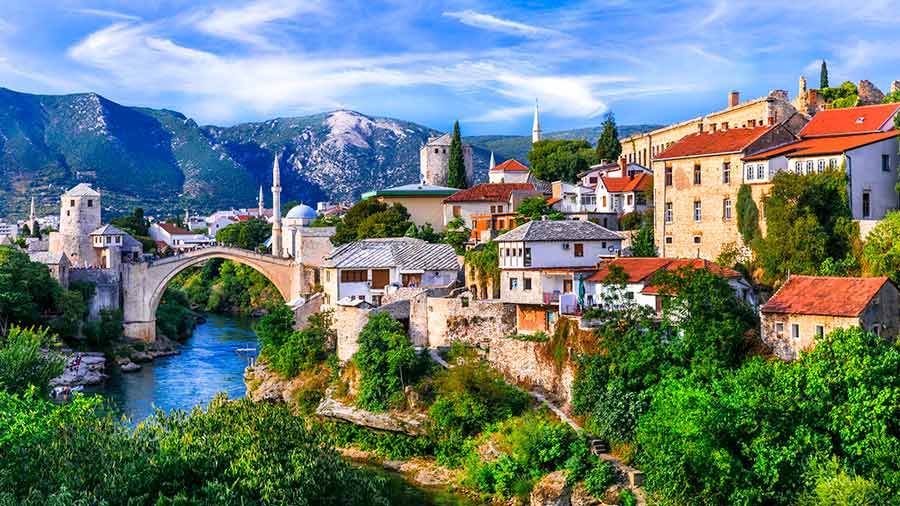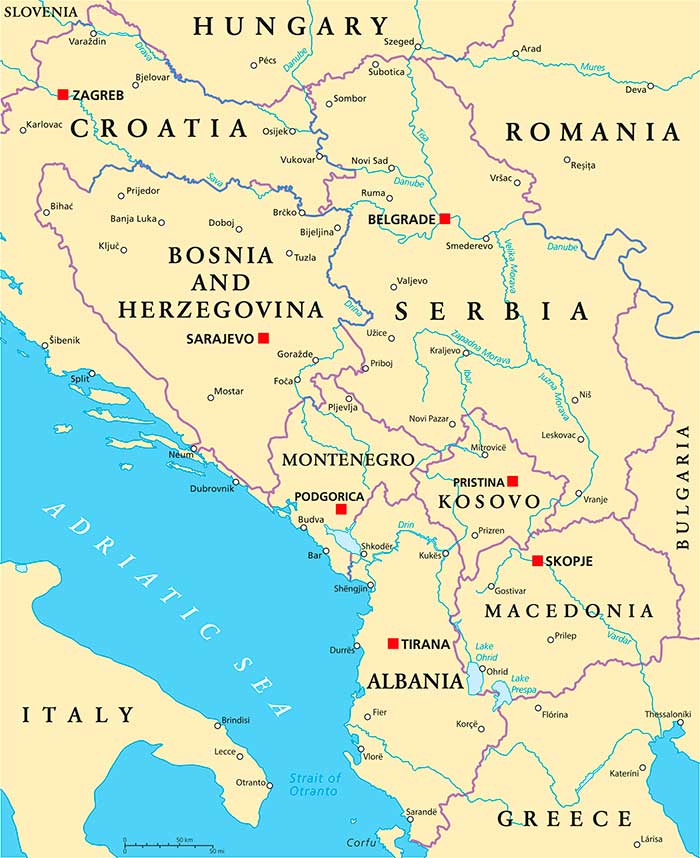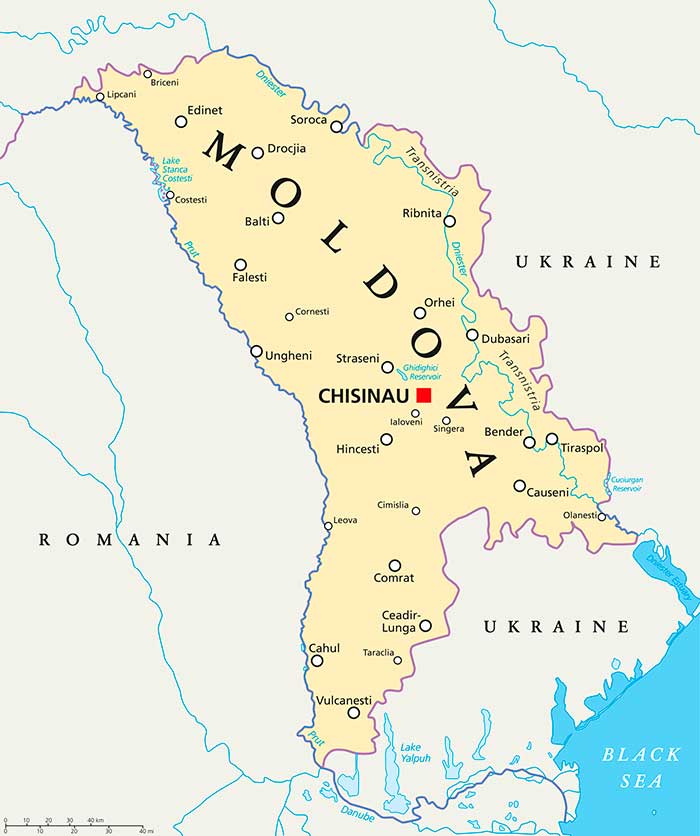European-Asian Geopolitics – The Implications Of Shifting Supply Chains In Wake Of The Russia-Ukraine Conflict

The Russia-Ukraine conflict is imposing significant changes on global geopolitics and is re-arranging the Eurasian political and supply chain map with considerable impact. In this article I examine the key areas that will be subject to significant alterations that impact Europe.
Part 1: EUROPE
Russia-EU Borders
I see little change for these to open for trade any time soon, although over time and an end to the conflict flight channels may reopen. Russia views itself as having been treated very badly by Europe, with Sergey Lavrov, the foreign Minister saying that “Never again will Moscow trust the EU.” These sentiments will take decades to repair while the EU’s eastern flank is now heavily militarized. This will lead, even if borders are reopened, to lengthy checkpoints and long queues.
Russia-EU Trade
It is also hard to see among all the media rhetoric how European brands can re-enter the Russia market without any European consumer backlash, or that any semblance of a return to industrial trade can begin without the removal of sanctions. Tellingly, both the United States and EU have stated their objective is to ‘make Russia weak’ in denying the country critical imports. As there is little likelihood of a pro-Western Russian leader emerging after Putin, prospects of any resurgence in trade are slim and anyway require the reinstatement of WTO trade relations which have currently been removed. Tariffs are high and the sheer economic viability of bilateral trade has been largely destroyed. Russia has written off the EU market in favor of the East, while the European Union can forget any meaningful access to the Russian consumer market, while Russian tourism flows into the EU are also rapidly drying up.
European Quirks
Serbia, Bosnia & Croatia
There are however some European anomalies that will emerge. Serbia, a European, landlocked nation, has borders with EU members Hungary, Romania, and Bulgaria. These are more pro-Russia than the Western EU, and have regularly faced down Brussels attempts to impose blanket Russian Oil embargos. Serbia though has a Free Trade Agreement (FTA) with the Eurasian Economic Union, which includes Russia and Belarus along with Armenia, Kazakhstan, and Kyrgyzstan. The EAEU should not be written off as a trade bloc, it has a GDP of US$5 trillion, a population of 183 million, an FTA with Vietnam, and is negotiating numerous others with multiple Asian countries. This is likely to impact the Eastern EU as these nations businesses will start to look for Serbian investments to enable exports to Russia, the EAEU and Asia.
Getting those products to market may also not be an issue, while Serbia itself is landlocked, its Western neighbor Bosnia & Herzegovina is not – and it too has applied for a FTA with the Eurasian Economic Union and has an Adriatic port at Neum. The European Union will need to tread very carefully about allowing Serbian/Bosnian access to EAEU markets lest a very possible Balkans war breaks out. If so, this time Russia will not be coming to assist NATO troops keep the peace, meaning a re-writing of the Balkans and EU borders to the south.

Meanwhile, regional trade development with the EAEU will start to occur with regional and security implications also for EU member Croatia.
There are Bosniak plans to convert Neum to a freight port, including building a seaport, rail and motorway. This means the under-construction Croatian Pelješac Bridge, which bypasses Neum altogether, must have a high enough clearance to allow Neum traffic. The bridge is scheduled to open later this year. However, Croatia, under EU directives, has significantly altered the height of the bridge by adapting it to ships whose dimensions cannot enter the Bay of Neum at all.
Today the main freight port for Bosnia and Herzegovina is Ploče (in Croatia) further north, which has a railway to Bosnia and Herzegovina, meaning that at present, the EU effectively controls Bosnian maritime access. That is highly likely to become a trade and possibly military flashpoint unless the bridge and access to Neum can be altered.
The likelihood that a second European border could become conflicted is very real.
Montenegro, Kosovo & Albania
These countries, to the south of the Balkans could also become unstable. Montenegro is Eastern Orthodox with long ties to Russia, although EU promises to the country have had an unsettling effect. The EU placed sanctions on Russia’s primary religious figure, Patriarch Kirill of All-Russia on Wednesday (May 4), a highly volatile decision that will create further divisions within Montenegro especially and is designed to turn this deeply conservative country towards an EU favored Eastern Pope. Neighboring Kosovo is not recognized either by Russia or China as an independent nation, with both relating to the Serbian position that it was carved out of Serbia by NATO in 2008 and should be returned.
Albania is distrustful of Moscow yet has long complained of EU promises of membership potential not being met. With the Ukraine suddenly seeming to be favored as an EU candidate ahead of Albania this is also likely to cause frictions. There is unlikely to an Albanian application to apply for an EAEU FTA as Albanian-Serbian relations are not generally positive, meaning that the EU, should it accept Ukraine, will face immense pressures, under the potential pain of new war, to accept as members Albania, Kosovo, Montenegro as well.
Moldova
Moldova borders Romania and Ukraine, with the breakaway region of Transnistria also part of the immediate regional territory. Transnistria runs along the entire eastern bank of the Dnieper River bordering Ukraine. The Transnistria region did not wish to join with Moldova after the breakup of the USSR in 1992 under fears that Moldova would be subsumed by Romania, based on historical conflicts between the Romanians on the Western Dnieper and the Moldovans on the eastern Dnieper going back centuries. Transnistria is currently supported by a Russian military presence to preserve the peace and maintain Transnistrian wishes (a situation not unlike that of the UK and the Northern Ireland conflict at its height).
Moldova has again been consistently approached by the European Union for membership and has veered between East and West over the past 25 years. Today, it is a member of the Commonwealth of Independent States, which includes Russia along with many other ex-Soviet nations, however has recently elected a pro-European Prime Minister. It has trade agreements with both Russia and the EU, however, has also been discussing an EAEU FTA.

With Ukraine on its eastern and northern border, and the southern part of Ukraine now under effective Russian military control, the trade dynamics for Moldova will switch to Russia assuming that Russian continues to hold and control the southern Ukraine territory. There are EU fears that Russia will continue a march West into Transnistria (where it already has troops) and subsequently turn Moldova into a new EU/Russia border with Romania. Should Russia prevail in Ukraine and depose the existing Government, bringing the country back into Moscows sphere of influence, then unless the EU and NATO wish to fight Russia in the country, Moldova’s immediate future will be with Russia.
Should this occur, and Moldova obtain EAEU FTA status, this means that it is possible that the southern EU will border Eurasian Economic Union members on both the Western and Eastern Balkans, including the Adriatic and Black Seas.
The Italian and Turkish Influence
Such moves to incorporate Bosnia and Moldova into the EAEU may be quietly welcomed by both Italy and Turkey. Italy has long wanted to develop access to markets in the Western Balkans yet EU policy as concerns the region has been erratic and at times run counter to Italy’s own trade interests. The country retains a special bond with Russia and would see access to Russian and Balkan markets as a positive.
A similar stance is also likely to be taken by Turkey as concerns Moldova and southern Ukraine. While part of NATO, it is not part of the European Union and has long expressed frustration with Brussels over the issue. It is also discussing the potential for an FTA with the EAEU, and has pointedly stated it does not wish to see a NATO presence (meaning American warships) in the Black Sea, preferring to take on military and maritime security in the region one its own – as a de facto NATO representative.
Summary
There is a very real chance that conflict could break out in the Balkans unless both the European Union and NATO are extremely careful. Preventing this happening means deeper discussions with Moscow than are currently able to be arranged and may not be possible. If things deteriorate, the southern EU will face grave problems and the possibly of a second flank opening up as a conflict zone for the EU. It is uncertain how it could cope with this.
Should the situation be manageable, then it appears island states of Russian Free Trade will open up on the Adriatic and Western Black Sea coast. While the EU may not appreciate it, this may be the only solution in preventing further conflict. If so, then the bordering EU nations of Croatia, Italy, Hungary, Romania and Bulgaria will develop, in time, as new passageways for EU goods to enter the Russian and Asian markets – and vice-versa. If you feel this will affect your business, further risk and trade analysis can be obtained by contacting us at silkroad@dezshira.com
While the situation in Ukraine is the immediate concern of the European Union right now, it may have to make concessions to Moscow to the Balkans and EAEU trade should the region not descend into a second European conflict for which Brussels, without US assistance, is woefully ill-equipped. Such are the perils of underestimating the still reverberating ripples of the collapse of the Soviet Union and all too clumsy attempts to shoehorn inappropriate and unprepared nations into a larger EU bloc when coupled with NATO military expansionism.
It remains pertinent to note however that Brussels current problems stem from its absorption of the Eastern bloc back in 1992 and the breakup of the USSR. Today’s Ukraine conflict has its roots in that event, and signals both that the Western EU has failed to fully understand or properly integrate the Eastern EU into its ideologies and has completely failed to appreciate Russian views on the matter. The longer that continues, the greater the likelihood of additional problems in the Balkans.
Nevertheless, if peace can be maintained, the alternative price to pay will be small, Russian influenced enclaves on the EU’s Adriatic and Black Sea coasts. Brussels may have to not just get used to the idea, but actively cooperate with it.
Related Reading
About Us
Chris Devonshire-Ellis is the Chairman of Dezan Shira & Associates. The firm assists British and Foreign Investment into Asia and has 28 offices throughout China, India, the ASEAN nations and Russia. For strategic and business intelligence concerning China’s Belt & Road Initiative please email silkroad@dezshira.com or visit us at www.dezshira.com





